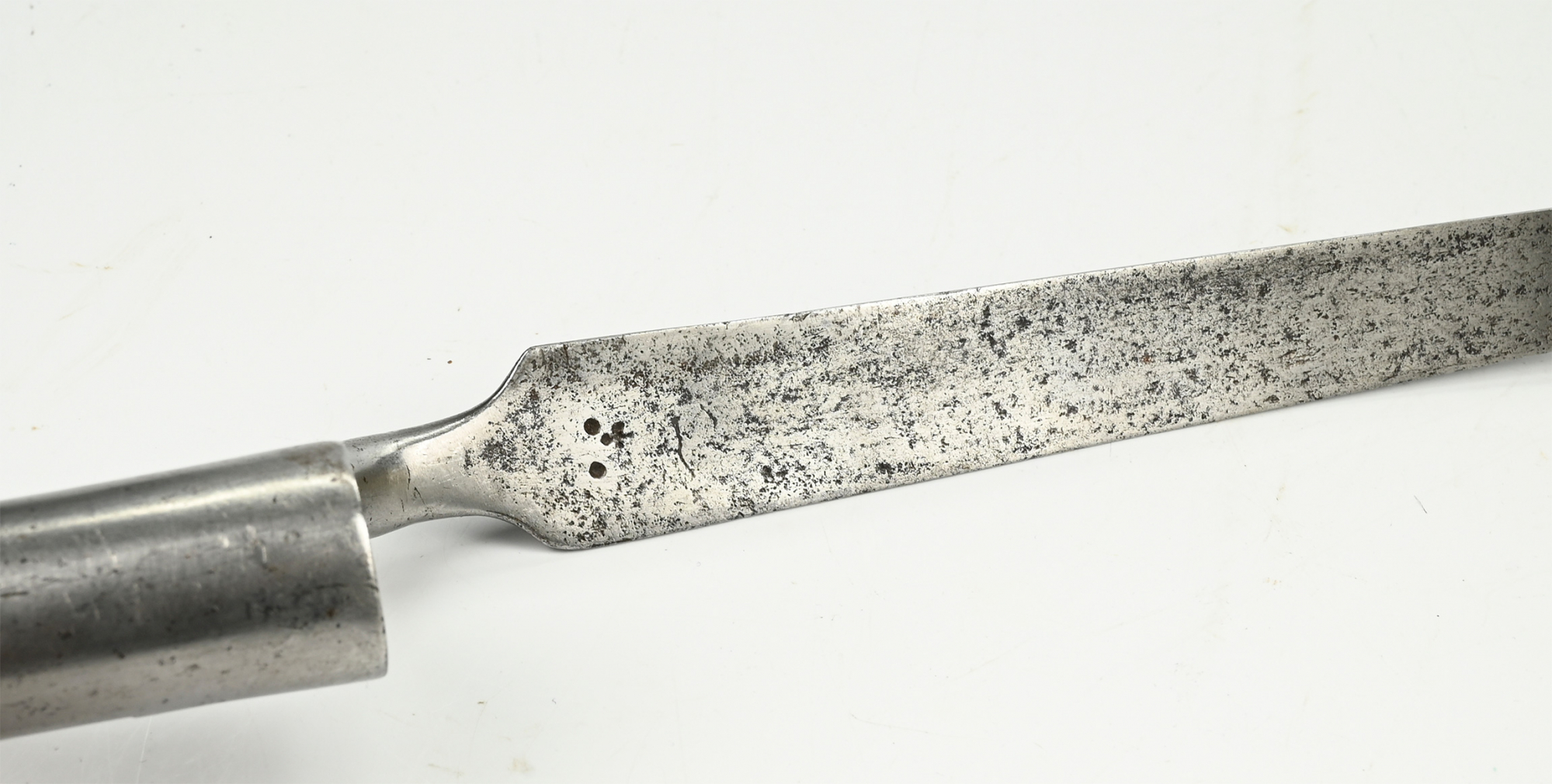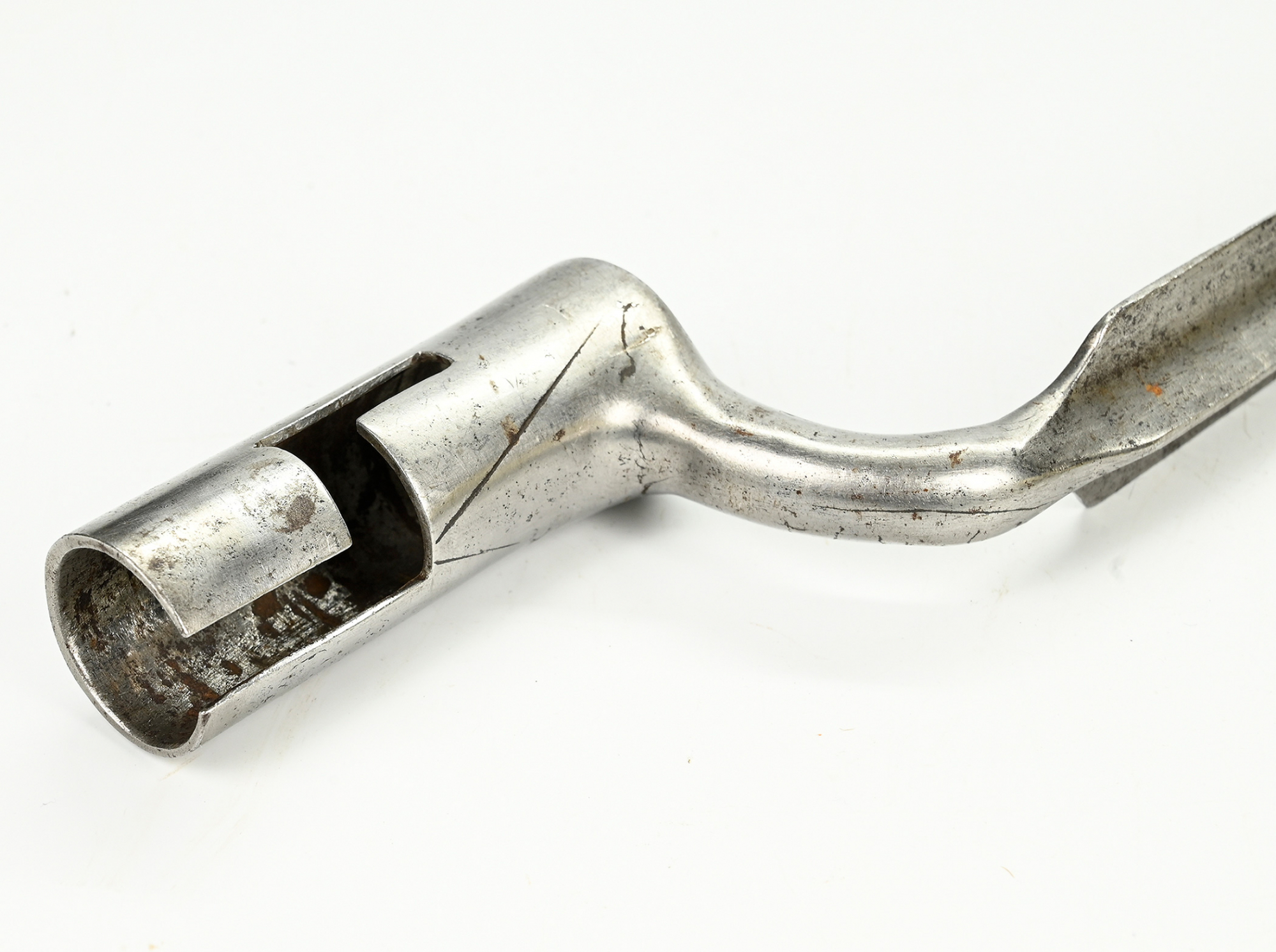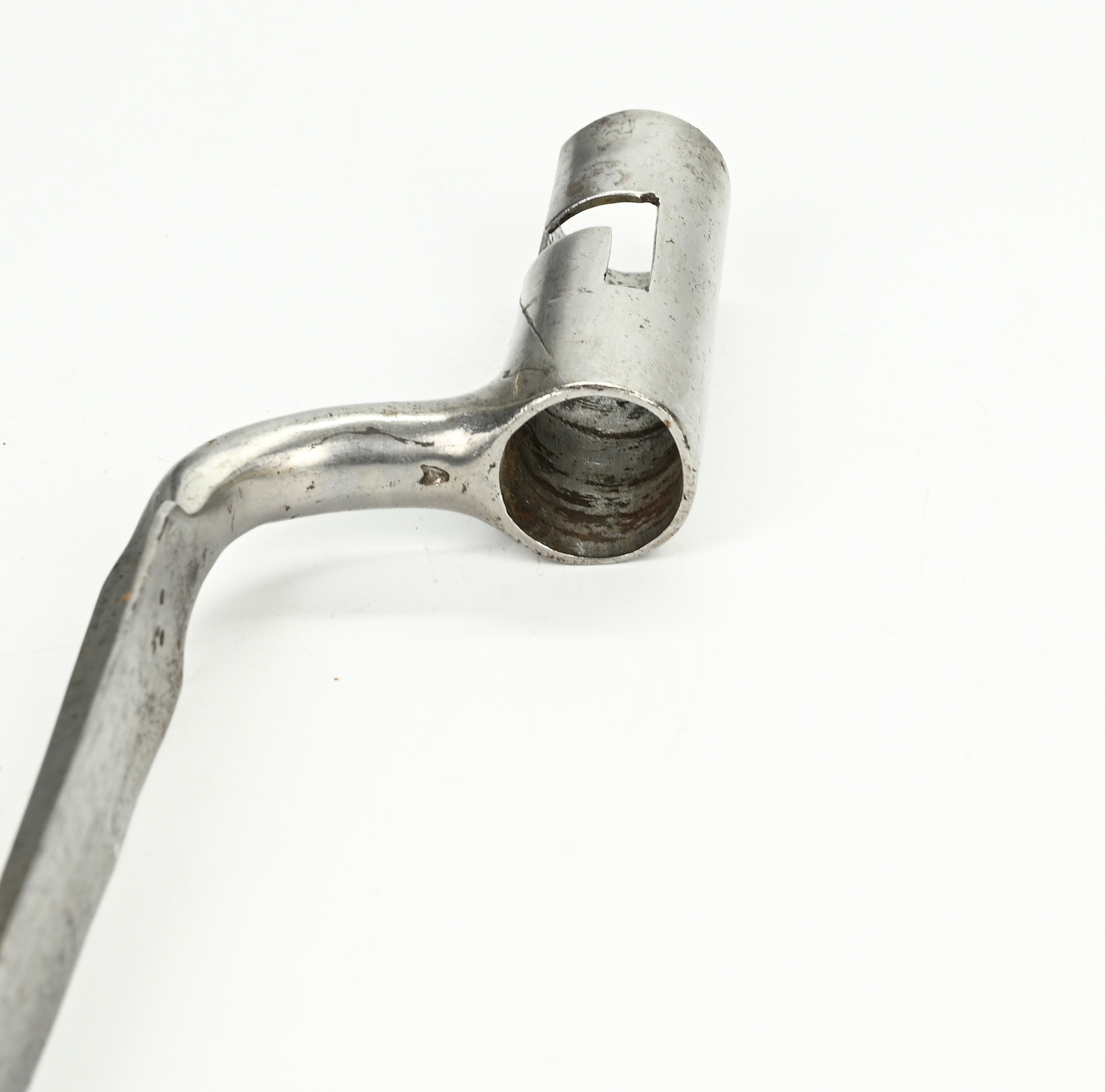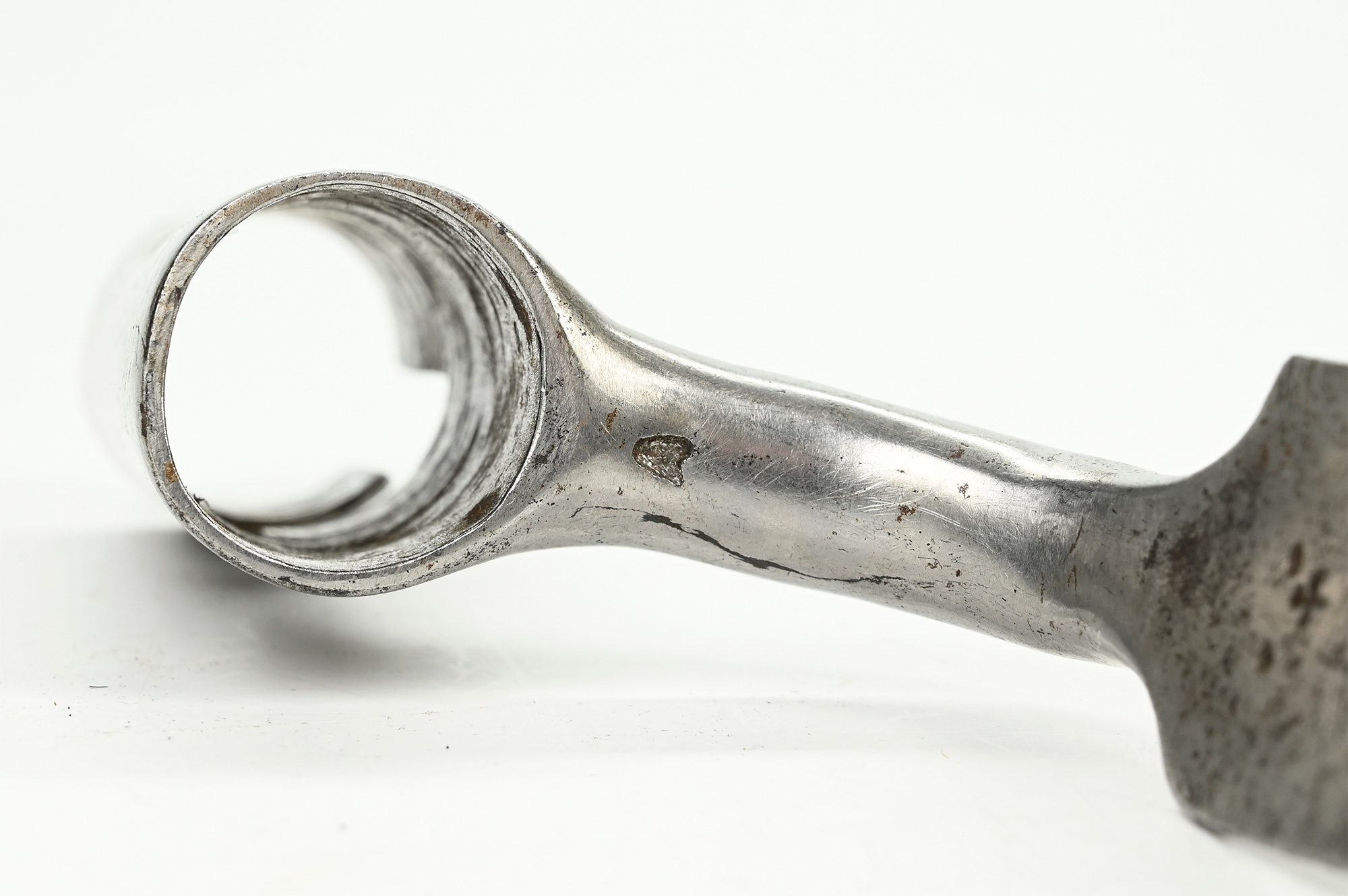site search
online catalog
FRENCH AND INDIAN WAR FRENCH 1750 PATTERN BAYONET

Hover to zoom






$575.00 SOLD
Quantity Available: None
Item Code: 1052-67
Introduced in 1740-1750, this was likely the most common pattern in use in America during the French and Indian War. The triangular blade has sloping shoulders, a slightly dished upper surface with a shallow fuller extending back from the tip about 6 inches and a central ridge on the bottom with two deep, concave flutes. The salient feature of these is the use of simple incised lines on the underside of the socket imitating the earlier raised, shield-shaped juncture of the neck and socket of earlier patterns. This one shows a modification of the socket mortise from two steps to three, bringing it into line with the 1754 pattern, but also creating a shorter stud to muzzle distance, likely for a specific musket. A similar alteration can be seen on Figure 32 of Goldstein, Bayonet in New France.
This is in very good condition, with no bends or nicks, cleaned at some point in the past and showing a silver gray with dark gray spots, but preserving much of the blade marking at the base. [sr] [ph:m]
~~~~~~~~~~~~~~~~~~~~~~~~~~~~~~~~~~~
THIS ITEM, AS WITH ALL OTHER ITEMS AVAILABLE ON OUR WEB SITE,
MAY BE PURCHASED THROUGH OUR LAYAWAY PROGRAM.
CLICK HERE FOR OUR POLICIES AND TERMS.
THANK YOU!
Inquire About FRENCH AND INDIAN WAR FRENCH 1750 PATTERN BAYONET
Most Popular
Historical Firearms Stolen From The National Civil War Museum In Harrisburg, Pa »
Theft From Gravesite Of Gen. John Reynolds »
Selection Of Unframed Prints By Don Troiani »
Fine Condition Brass Infantry Bugle Insignia »
British Imported, Confederate Used Bayonet »
Scarce New Model 1865 Sharps Still In Percussion Near Factory New »
featured item
“SOFT TACK:” AERATED BREAD CRATE
This would make a nice addition to a camp, sutler, Sanitary Commission or even a hospital display. Constructed of thin, about ½” thick, unpainted, wide pine boards that are simply nailed together, this is about 18” X 13 ¾” X 12” and is… (1202-166). Learn More »


